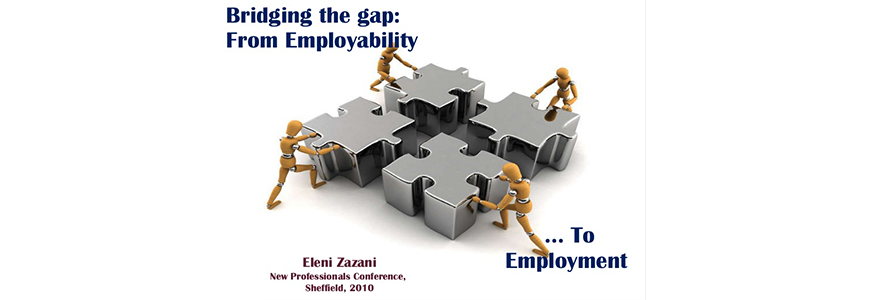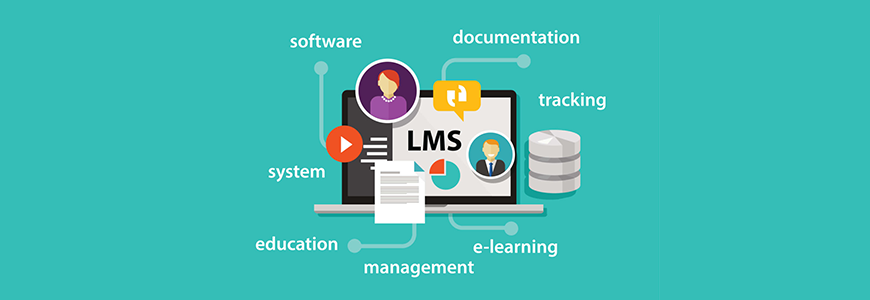
EMPLOYABILITY IN DIGITAL AGE – A Paradigm Shift
The traditional concept of “Employability” is undergoing a paradigm shift in this Digital Age; it is broadly classified into two dimensions:
- Employability Competencies needed to secure employment is changing rapidly in resonance to changes in technology / industry
- Employability Competencies needed to remain “employable” is also changing at different stages of career
Let us analyse each dimension
Employability, defined as one’s ability / competency to identify meaningful opportunities within organization or between organizations, which would be a critical success in career in today’s VUCA (volatility, uncertainty, complexity and ambiguity) environment. This fundamental nature of “employability” is undergoing a change in this era of “Fourth Industrial Revolution”. The IT industry is driven by globalization, integration of fields ranging from Nanotechnology to Genetics and technological advancements like Autonomics, Digital Revolution and Robotic Process Automation (RPA).
The hard skill components of employability skill are no longer a static phenomenon, but dynamic in resonance to “labour market” and “technological” changes. As such the “Competencies” (Knowledge, Skills, and Personal Attributes) expected from the employees in today’s IT industry is changing at rapid pace, making Employability of workforce as a “dynamic” phenomenon.
Many skilled jobs were done by humans earlier, like, back-office documentation processing, IT support, process driven activities and administrative work, basic programming, testing etc. Due to rapid automation and digital revolution those jobs have gone obsolete, giving in to the demands for higher efficiency and lower cost. As a result, those skills are no longer “employable”.
Interestingly, the future of work seems to be favourable for those who possess holistic job skills, not only task-oriented or technical skills; also, non-transferrable competencies or “human-centric skills” - like Agile Mindset, Learnability, understanding the stated and more importantly implicit needs of customer, Out of Box Thinking, Project Management Skills, Empathy, Multitasking Based on Context, Problem Solving Attitude, Influencing Skills etc.
As another important dimension, Employability is also changing from being a competence exhibited and assessed during the time of joining a job. To becoming an ongoing phenomenon to be sustained and displayed over lifetime career, and the skills needed for remaining “employable” CHANGE at different stages of career.
* WEF - “Future of Jobs “Research studies and “Jobs Reset Summit “
* HFS Research
* HBR “Is your Workforce Ready”
EMPLOYABILITY IN DIGITAL AGE – The “New Normal”

In Summary
“Niche high-end digital/Tech skills which may undergo changes every few years”.
And
“Competencies which would need a human intellect and contextual discretion, and not “doable by a machine” would also change at different stages of career”.
Thus, a strategy to continuously bridge these “Competency or Skill Gap” has thus become the “New Normal” of employability.
EMPLOYABILITY IN DIGITAL AGE – Talent Refactoring as Business Strategy

The key to sustained employability is bridging the “Competency / Skill Gap".
In today’s Digital age the onus has shifted the employee to acquire the knowledge, skills, and abilities and keep oneself updated and relevant to the industry to be employable.
However, it is also imperative for companies to create a strategy of Talent Refactoring Ecosystem wherein the existing talent pool can be repurposed, and all resources needed by employees to upskill / reskill them should be available. With sudden high demand for digital skills and dynamic labour market, the demand supply ratio of talents with niche skills is skewed in hiring market. Hence, companies have to “grow their own timber”, to meet the business demands, remain resilient and ahead of the curve in business. Rapid changes in technologies and agility with which workforce need to be kept “future” ready.
Research Studies have also proven that if reskilling is not implemented by companies, they may lose their key talent significantly
- Lack of employee preparedness has been proved to have direct huge cost impact on company.
- Industries with skilled talent would generate higher stock returns and less disruption.
It has also been proven that if companies provide opportunities for employees reskill themselves; their retention and engagement is 60 % more.
Organizations should define a clear “Talent Refactoring / Upskill / Reskill Strategy” and leverage the digital IoT technologies to create a Talent Refactoring / Learning Platform which would have all futuristic features of a Nextgen applications like agile, user-friendly, self-navigable, accessible from different ecosystems and multiple devices etc.
*Gartner Shifting skills survey
*Accenture
*Coursera Global Skills Index 2020
TALENT REFACTORING FRAMEWORK- A Self-sustaining Talent Pipeline ecosystem

What does Industry Analysts say …………?
Brandon Hall Group’s 2020 learning strategy research illustrates some of the issues that few companies are experiencing is surrounding learning: 54% cite a lack of alignment between learning and business outcomes, and 43% say earners are not sufficiently engaged
“People are already learning from experience and from each other, every day. The problem L&D function has today is trying to optimize and support learning, whereas, in the past, it has been focused on producing content.”
Donald Taylor- L & D Guru – Learning and Performance Institute
“Encouraging Learning in the flow of work is imperative to maintain a high-performing organization. Learning professionals want to see successful examples of resources and platforms that support immediate learning without disrupting the flow of work”.
The above findings clearly prove that the role of HR/Talent Management/Training functions has to transform from the creation of content and training schedules to tracking training hours, which would benefit employee without correlating it with the skills needed by business etc.
Aligning all the training efforts will create a talent pipeline which may address the needs of the business. In future, technology-based Talent Refactoring ecosystem for employees would help them to upgrade their skills. The skills would craft their career path in alignment with business needs.

The following steps can guide in upgrading the existing Learning Management Systems of Companies, to a full-fledged Talent Refactoring Ecosystem.
Step 1: Change in Training Strategy Outlook
Training needs to be repositioned from being perceived or projected as a “Employee benefit to key “Strategic Business Lever” for dual benefit of business and career growth.
Step 2: Create an integrated Talent Refactoring Framework
Upgrade the LMS with essential elements in this framework. Grooming a Digital Workforce for the future could happen only in Talent Refactoring Ecosystem!
- Carefully curated multimedia learning content from credible and accredited institutions/industry experts with emphasis on practical application and skill/competency proficiency acquisition made available and easily accessible anytime anywhere.
- Bridge Programs to migrate from Adjacent Skill to Core Skill with mapping.
- Practice platforms providing practical exposure through Guided Projects, Internships, Experience sharing / Case studies etc.
- Discussion Forums / Chat bots helps to clarify and develop deeper insight from
empanelled experts.
- Calibrated Course Assessment Mechanism empowered to assess proficiency and self-improvement options.
Step 3. Connect with Career Pathing
- Award Skill Tags Credentials like “API Professional”, “Cyber Security Designer”, “Scrum Master” to signify specialization.
- Automatic Career Path progression and deployment mechanism of Certified Professionals to suitable Career / Role Opportunities.
Step 4 – Reward and Recognition
Formulate Rewards and Recognition Mechanisms like Skill-Based pay and Career Growth opportunities for Certified Professionals.
Step 5: Talent Refactoring Metrics to guide Business Strategy
Clearly defined metrics on following areas would help management to create a skill-based map of the Enterprise, which would reflect their readiness to take up new digital projects. This in turn could support to finalize the business strategy and goal, also, helps to make the revenue desired.
Revenue generated from such projects would ensure the Business resilience to the changing demands of industry
- Comprehensive Skill Taxonomy outlining Core skills and adjacent skills needed
- Availability of Tailored Courses and Bridge Courses
- Employee Participation Metrics – related to courses and certifications
- Assessment metrics – Proficiency Scale
- Deployment Statistics to assess Talent Pipeline.
Such Innovations and work practices may change from time to time, but the fundamentals of human behaviour were discovered by our ancestors thousands of years ago
“Paadham Aacharyaath aadhathe
Paadham Sishya swamedhayaa
Paadham saha brahmachaarya
Paadham kaala kremeyana”
(“One’s chosen path is culmination of teacher’s guidance, inherent aspiration, influence of other peers and time “) - Ancient Indian Vedic Proverb
About the Author
Lakshminarayanan K V is a Senior HR/OD professional with more than two decades of rich experience in entire gamut of HR function. He also sports the roles of a Career Counsellor, Guest Faculty, Behavior Analyst, Professional SME Speaker and an Indologist.